Adrian Paschke
Leveraging Diffusion Models for Parameterized Quantum Circuit Generation
May 27, 2025Abstract:Quantum computing holds immense potential, yet its practical success depends on multiple factors, including advances in quantum circuit design. In this paper, we introduce a generative approach based on denoising diffusion models (DMs) to synthesize parameterized quantum circuits (PQCs). Extending the recent diffusion model pipeline of F\"urrutter et al. [1], our model effectively conditions the synthesis process, enabling the simultaneous generation of circuit architectures and their continuous gate parameters. We demonstrate our approach in synthesizing PQCs optimized for generating high-fidelity Greenberger-Horne-Zeilinger (GHZ) states and achieving high accuracy in quantum machine learning (QML) classification tasks. Our results indicate a strong generalization across varying gate sets and scaling qubit counts, highlighting the versatility and computational efficiency of diffusion-based methods. This work illustrates the potential of generative models as a powerful tool for accelerating and optimizing the design of PQCs, supporting the development of more practical and scalable quantum applications.
Uncertainty-Aware Trajectory Prediction via Rule-Regularized Heteroscedastic Deep Classification
Apr 17, 2025



Abstract:Deep learning-based trajectory prediction models have demonstrated promising capabilities in capturing complex interactions. However, their out-of-distribution generalization remains a significant challenge, particularly due to unbalanced data and a lack of enough data and diversity to ensure robustness and calibration. To address this, we propose SHIFT (Spectral Heteroscedastic Informed Forecasting for Trajectories), a novel framework that uniquely combines well-calibrated uncertainty modeling with informative priors derived through automated rule extraction. SHIFT reformulates trajectory prediction as a classification task and employs heteroscedastic spectral-normalized Gaussian processes to effectively disentangle epistemic and aleatoric uncertainties. We learn informative priors from training labels, which are automatically generated from natural language driving rules, such as stop rules and drivability constraints, using a retrieval-augmented generation framework powered by a large language model. Extensive evaluations over the nuScenes dataset, including challenging low-data and cross-location scenarios, demonstrate that SHIFT outperforms state-of-the-art methods, achieving substantial gains in uncertainty calibration and displacement metrics. In particular, our model excels in complex scenarios, such as intersections, where uncertainty is inherently higher. Project page: https://kumarmanas.github.io/SHIFT/.
* 17 Pages, 9 figures. Accepted to Robotics: Science and Systems(RSS), 2025
Post-Training Language Models for Continual Relation Extraction
Apr 07, 2025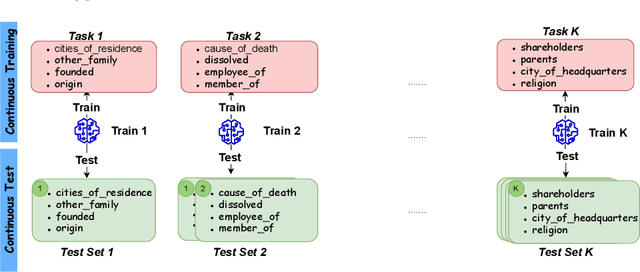
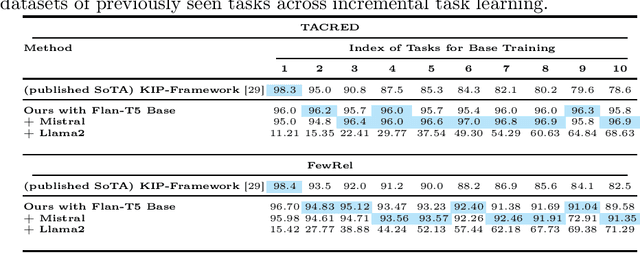
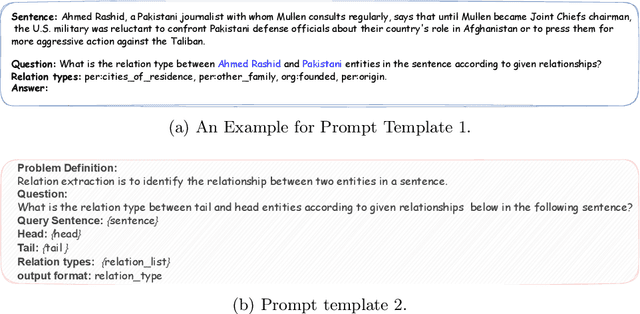

Abstract:Real-world data, such as news articles, social media posts, and chatbot conversations, is inherently dynamic and non-stationary, presenting significant challenges for constructing real-time structured representations through knowledge graphs (KGs). Relation Extraction (RE), a fundamental component of KG creation, often struggles to adapt to evolving data when traditional models rely on static, outdated datasets. Continual Relation Extraction (CRE) methods tackle this issue by incrementally learning new relations while preserving previously acquired knowledge. This study investigates the application of pre-trained language models (PLMs), specifically large language models (LLMs), to CRE, with a focus on leveraging memory replay to address catastrophic forgetting. We evaluate decoder-only models (eg, Mistral-7B and Llama2-7B) and encoder-decoder models (eg, Flan-T5 Base) on the TACRED and FewRel datasets. Task-incremental fine-tuning of LLMs demonstrates superior performance over earlier approaches using encoder-only models like BERT on TACRED, excelling in seen-task accuracy and overall performance (measured by whole and average accuracy), particularly with the Mistral and Flan-T5 models. Results on FewRel are similarly promising, achieving second place in whole and average accuracy metrics. This work underscores critical factors in knowledge transfer, language model architecture, and KG completeness, advancing CRE with LLMs and memory replay for dynamic, real-time relation extraction.
Improving Hate Speech Classification with Cross-Taxonomy Dataset Integration
Mar 07, 2025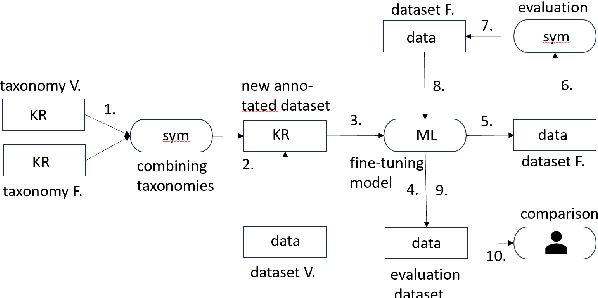
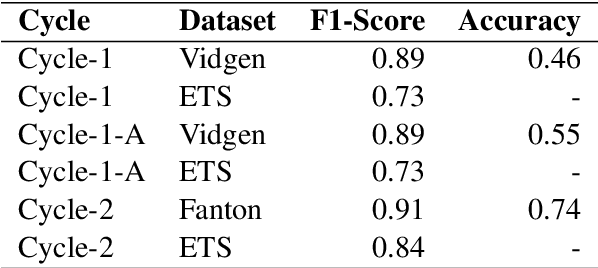
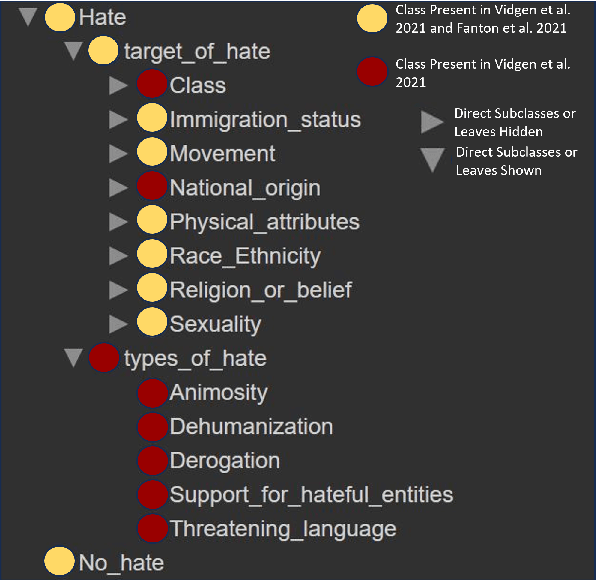
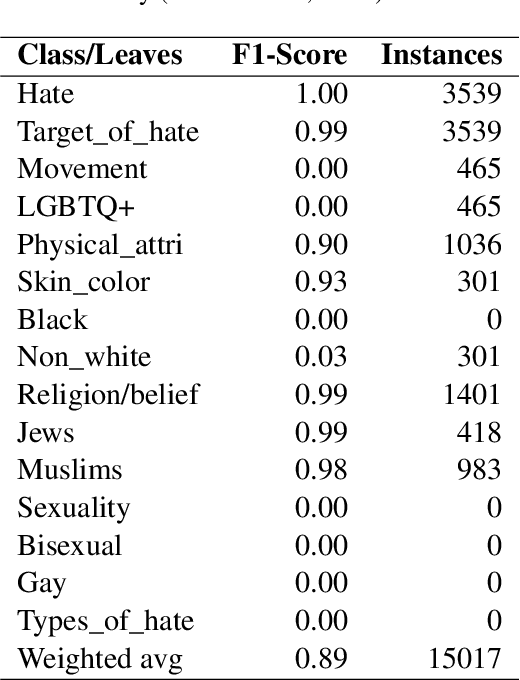
Abstract:Algorithmic hate speech detection faces significant challenges due to the diverse definitions and datasets used in research and practice. Social media platforms, legal frameworks, and institutions each apply distinct yet overlapping definitions, complicating classification efforts. This study addresses these challenges by demonstrating that existing datasets and taxonomies can be integrated into a unified model, enhancing prediction performance and reducing reliance on multiple specialized classifiers. The work introduces a universal taxonomy and a hate speech classifier capable of detecting a wide range of definitions within a single framework. Our approach is validated by combining two widely used but differently annotated datasets, showing improved classification performance on an independent test set. This work highlights the potential of dataset and taxonomy integration in advancing hate speech detection, increasing efficiency, and ensuring broader applicability across contexts.
GETAE: Graph information Enhanced deep neural NeTwork ensemble ArchitecturE for fake news detection
Dec 02, 2024



Abstract:In today's digital age, fake news has become a major problem that has serious consequences, ranging from social unrest to political upheaval. To address this issue, new methods for detecting and mitigating fake news are required. In this work, we propose to incorporate contextual and network-aware features into the detection process. This involves analyzing not only the content of a news article but also the context in which it was shared and the network of users who shared it, i.e., the information diffusion. Thus, we propose GETAE, \underline{G}raph Information \underline{E}nhanced Deep Neural Ne\underline{t}work Ensemble \underline{A}rchitectur\underline{E} for Fake News Detection, a novel ensemble architecture that uses textual content together with the social interactions to improve fake news detection. GETAE contains two Branches: the Text Branch and the Propagation Branch. The Text Branch uses Word and Transformer Embeddings and a Deep Neural Network based on feed-forward and bidirectional Recurrent Neural Networks (\textsc{[Bi]RNN}) for learning novel contextual features and creating a novel Text Content Embedding. The Propagation Branch considers the information propagation within the graph network and proposes a Deep Learning architecture that employs Node Embeddings to create novel Propagation Embedding. GETAE Ensemble combines the two novel embeddings, i.e., Text Content Embedding and Propagation Embedding, to create a novel \textit{Propagation-Enhanced Content Embedding} which is afterward used for classification. The experimental results obtained on two real-world publicly available datasets, i.e., Twitter15 and Twitter16, prove that using this approach improves fake news detection and outperforms state-of-the-art models.
Malinowski in the Age of AI: Can large language models create a text game based on an anthropological classic?
Oct 27, 2024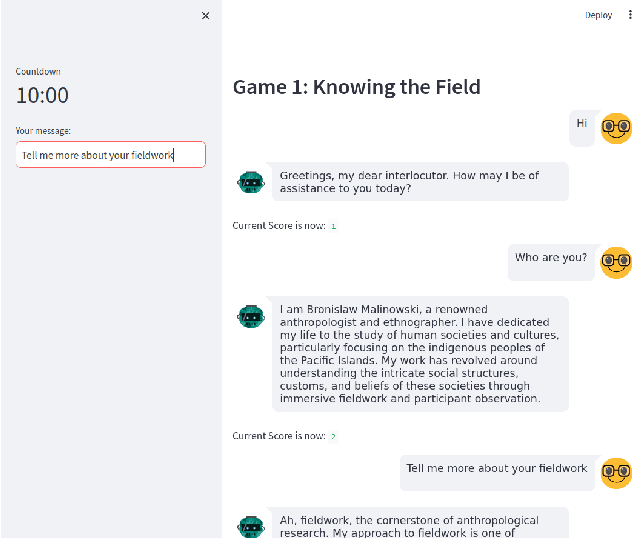

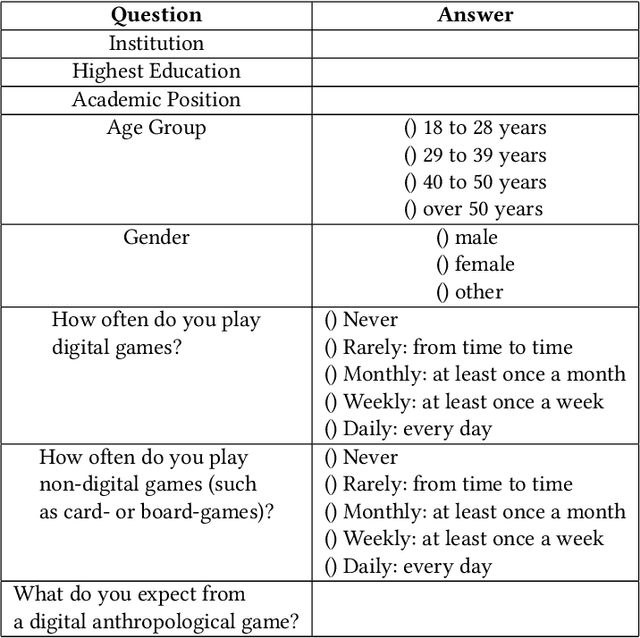
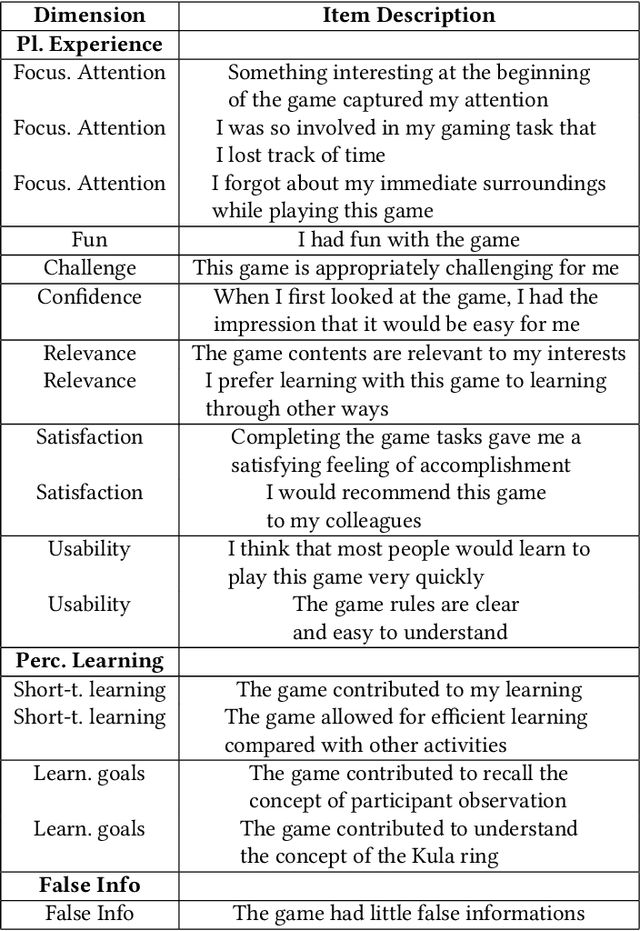
Abstract:Recent advancements in Large Language Models (LLMs) like ChatGPT and GPT-4 have shown remarkable abilities in a wide range of tasks such as summarizing texts and assisting in coding. Scientific research has demonstrated that these models can also play text-adventure games. This study aims to explore whether LLMs can autonomously create text-based games based on anthropological classics, evaluating also their effectiveness in communicating knowledge. To achieve this, the study engaged anthropologists in discussions to gather their expectations and design inputs for an anthropologically themed game. Through iterative processes following the established HCI principle of 'design thinking', the prompts and the conceptual framework for crafting these games were refined. Leveraging GPT3.5, the study created three prototypes of games centered around the seminal anthropological work of the social anthropologist's Bronislaw Malinowski's "Argonauts of the Western Pacific" (1922). Subsequently, evaluations were conducted by inviting senior anthropologists to playtest these games, and based on their inputs, the game designs were refined. The tests revealed promising outcomes but also highlighted key challenges: the models encountered difficulties in providing in-depth thematic understandings, showed suspectibility to misinformation, tended towards monotonic responses after an extended period of play, and struggled to offer detailed biographical information. Despite these limitations, the study's findings open up new research avenues at the crossroads of artificial intelligence, machine learning, LLMs, ethnography, anthropology and human-computer interaction.
CoT-TL: Low-Resource Temporal Knowledge Representation of Planning Instructions Using Chain-of-Thought Reasoning
Oct 21, 2024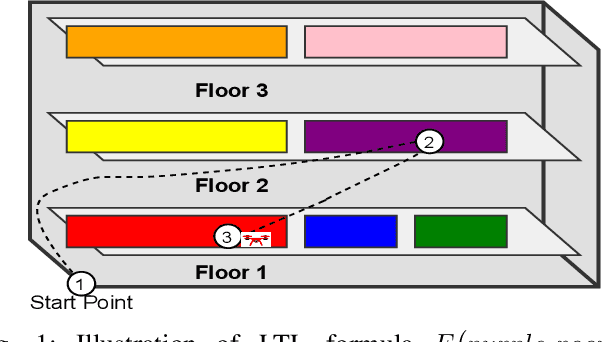
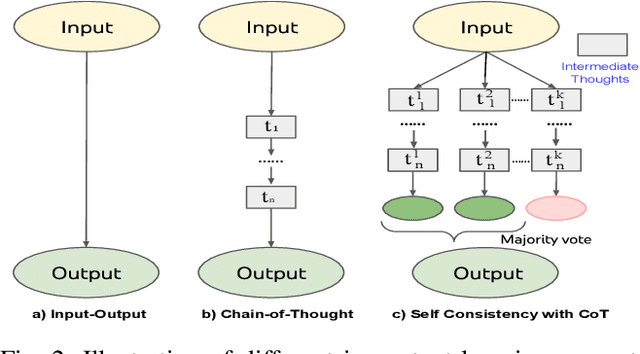
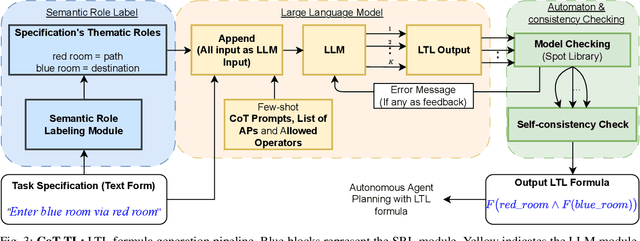
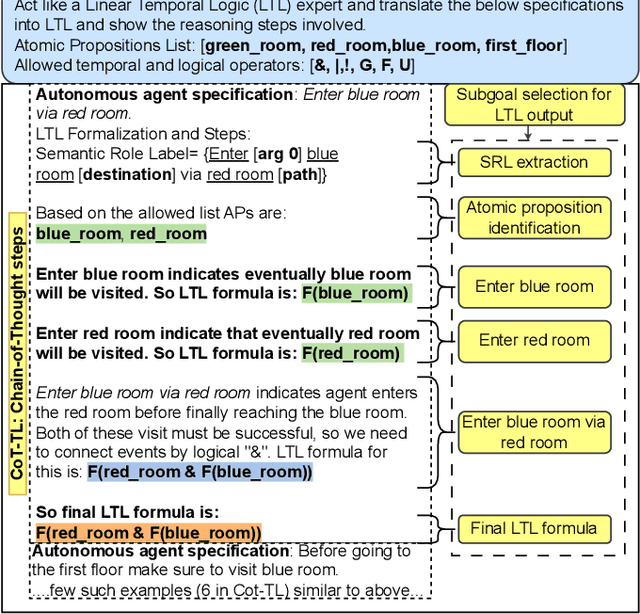
Abstract:Autonomous agents often face the challenge of interpreting uncertain natural language instructions for planning tasks. Representing these instructions as Linear Temporal Logic (LTL) enables planners to synthesize actionable plans. We introduce CoT-TL, a data-efficient in-context learning framework for translating natural language specifications into LTL representations. CoT-TL addresses the limitations of large language models, which typically rely on extensive fine-tuning data, by extending chain-of-thought reasoning and semantic roles to align with the requirements of formal logic creation. This approach enhances the transparency and rationale behind LTL generation, fostering user trust. CoT-TL achieves state-of-the-art accuracy across three diverse datasets in low-data scenarios, outperforming existing methods without fine-tuning or intermediate translations. To improve reliability and minimize hallucinations, we incorporate model checking to validate the syntax of the generated LTL output. We further demonstrate CoT-TL's effectiveness through ablation studies and evaluations on unseen LTL structures and formulas in a new dataset. Finally, we validate CoT-TL's practicality by integrating it into a QuadCopter for multi-step drone planning based on natural language instructions.
Relation Extraction with Fine-Tuned Large Language Models in Retrieval Augmented Generation Frameworks
Jun 24, 2024


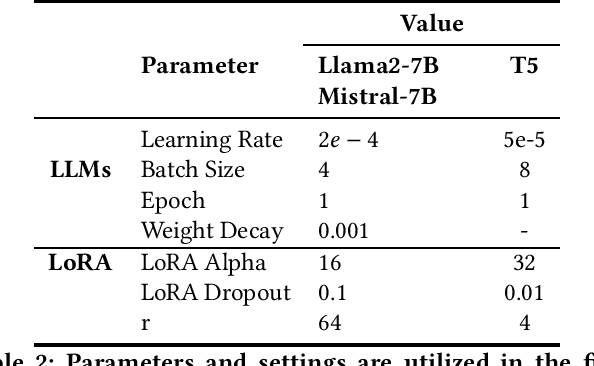
Abstract:Information Extraction (IE) is crucial for converting unstructured data into structured formats like Knowledge Graphs (KGs). A key task within IE is Relation Extraction (RE), which identifies relationships between entities in text. Various RE methods exist, including supervised, unsupervised, weakly supervised, and rule-based approaches. Recent studies leveraging pre-trained language models (PLMs) have shown significant success in this area. In the current era dominated by Large Language Models (LLMs), fine-tuning these models can overcome limitations associated with zero-shot LLM prompting-based RE methods, especially regarding domain adaptation challenges and identifying implicit relations between entities in sentences. These implicit relations, which cannot be easily extracted from a sentence's dependency tree, require logical inference for accurate identification. This work explores the performance of fine-tuned LLMs and their integration into the Retrieval Augmented-based (RAG) RE approach to address the challenges of identifying implicit relations at the sentence level, particularly when LLMs act as generators within the RAG framework. Empirical evaluations on the TACRED, TACRED-Revisited (TACREV), Re-TACRED, and SemEVAL datasets show significant performance improvements with fine-tuned LLMs, including Llama2-7B, Mistral-7B, and T5 (Large). Notably, our approach achieves substantial gains on SemEVAL, where implicit relations are common, surpassing previous results on this dataset. Additionally, our method outperforms previous works on TACRED, TACREV, and Re-TACRED, demonstrating exceptional performance across diverse evaluation scenarios.
Quantum Architecture Search: A Survey
Jun 10, 2024



Abstract:Quantum computing has made significant progress in recent years, attracting immense interest not only in research laboratories but also in various industries. However, the application of quantum computing to solve real-world problems is still hampered by a number of challenges, including hardware limitations and a relatively under-explored landscape of quantum algorithms, especially when compared to the extensive development of classical computing. The design of quantum circuits, in particular parameterized quantum circuits (PQCs), which contain learnable parameters optimized by classical methods, is a non-trivial and time-consuming task requiring expert knowledge. As a result, research on the automated generation of PQCs, known as quantum architecture search (QAS), has gained considerable interest. QAS focuses on the use of machine learning and optimization-driven techniques to generate PQCs tailored to specific problems and characteristics of quantum hardware. In this paper, we provide an overview of QAS methods by examining relevant research studies in the field. We discuss main challenges in designing and performing an automated search for an optimal PQC, and survey ways to address them to ease future research.
TR2MTL: LLM based framework for Metric Temporal Logic Formalization of Traffic Rules
Jun 09, 2024

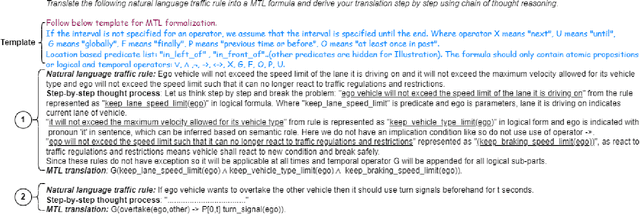
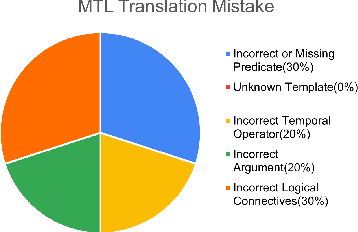
Abstract:Traffic rules formalization is crucial for verifying the compliance and safety of autonomous vehicles (AVs). However, manual translation of natural language traffic rules as formal specification requires domain knowledge and logic expertise, which limits its adaptation. This paper introduces TR2MTL, a framework that employs large language models (LLMs) to automatically translate traffic rules (TR) into metric temporal logic (MTL). It is envisioned as a human-in-loop system for AV rule formalization. It utilizes a chain-of-thought in-context learning approach to guide the LLM in step-by-step translation and generating valid and grammatically correct MTL formulas. It can be extended to various forms of temporal logic and rules. We evaluated the framework on a challenging dataset of traffic rules we created from various sources and compared it against LLMs using different in-context learning methods. Results show that TR2MTL is domain-agnostic, achieving high accuracy and generalization capability even with a small dataset. Moreover, the method effectively predicts formulas with varying degrees of logical and semantic structure in unstructured traffic rules.
 Add to Chrome
Add to Chrome Add to Firefox
Add to Firefox Add to Edge
Add to Edge